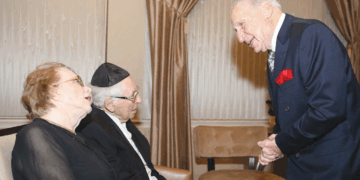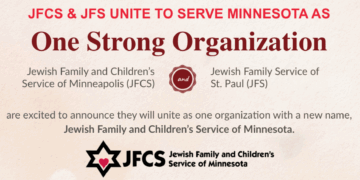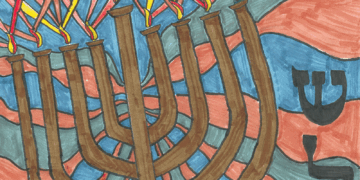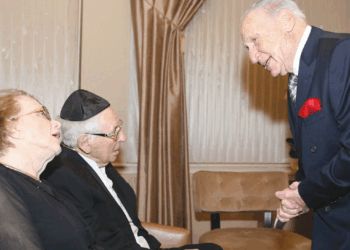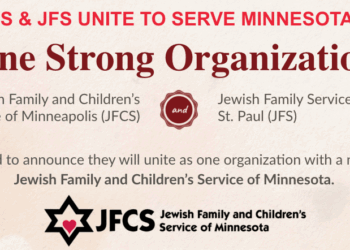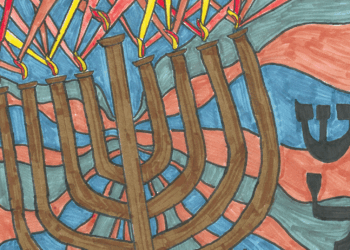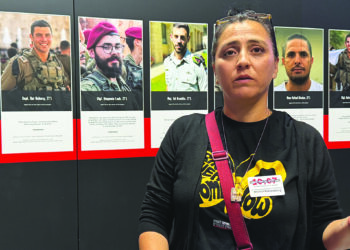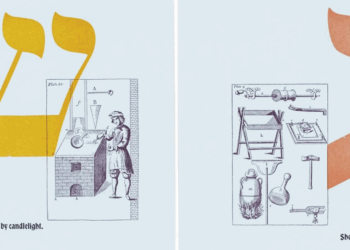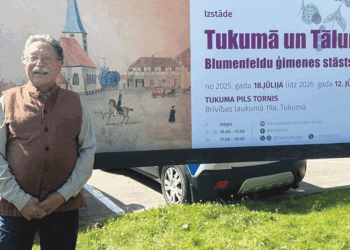By MORDECAI SPECKTOR
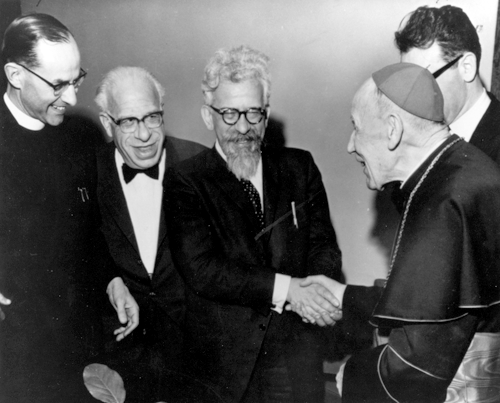
There is a Minneapolis angle to the recent international news story about Pope Benedict XVI’s absolving the Jewish people of guilt for the death of Jesus. The pope’s explanation reportedly came in the second volume of his biography of Jesus of Nazareth, which analyzes the gospels of John and Matthew, in their accounts of the hours leading up to Jesus’ crucifixion.
The recent writings by Joseph Ratzinger, Pope Benedict, have their foundation in the Second Vatican Council in 1965, and the Conciliar Declaration Nostra Aetate (In Our Time), which “revolutionized the Catholic Church’s approach to Jews and Judaism after nearly 2,000 years of pain and sorrow,” according to the Anti-Defamation League (ADL).
Section 4 of Nostra Aetate absolved Jews living today, and those in ancient times, of guilt for the death of Jesus. The document also “reproves every form of persecution” against Jews, who were victimized over hundreds of years in Europe by the Crusades, Inquisition, disputations, dispossessions and pogroms. In the 20th century, the Catholic teaching of contempt for Jews paved the way for the cataclysmic Nazi Holocaust.
Two years prior to the convening of Second Vatican Council, under the auspices of Pope John XXIII, Jewish and Catholic officials met to confer on the nature of the document that would come out of the Vatican conference. A meeting of Jewish and Catholic luminaries was arranged for March 31, 1963, at the offices of the American Jewish Committee in New York City.
Among the attendees was Rabbi Albert G. Minda, who was nearing the end of his 41-year tenure as senior rabbi of Temple Israel in Minneapolis. Minda also was completing his four-year term as vice president (1959-1961) and president (1961-1963) of the Central Conference of American Rabbis, the umbrella group for Reform rabbis in North America.
Roland Minda, the son of Rabbi Minda, recently provided the AJW with a copy of a letter from Rabbi Abraham Joshua Heschel to Rabbi Minda, and a “confidential” memo Heschel drafted, with “questions to be submitted to Cardinal [Augustin] Bea at the meeting of Jewish scholars.” Bea has been described as the “architect of Nostra Aetate.”
In the March 25, 1963, letter from Heschel to Rabbi Minda, the eminent Jewish theologian expressed his pleasure that the Minneapolis rabbi would join him and others in New York. Heschel wrote that he had consulted with Rabbi Louis Finkelstein, chancellor of the Jewish Theological Seminary, the Conservative rabbinical institution; and Rabbi Joseph B. Soloveitchik, Rosh Yeshiva of the Rabbi Isaac Elchanan Theological Seminary at Yeshiva University, in extending invitations to the meeting with Catholic officials.
In his letter to Minda, Heschel encourages Temple Israel’s rabbi to study the agenda outlined in his three-page memo, “and let me have the benefit of your thinking as to whether it should be modified or enlarged.”
Heschel’s first question in the memo asks: “To condemn sins against truth and clarify the position of the Church, can the Ecumenical Council issue an unequivocal declaration that statements attributing collective guilt to the Jewish people for the Crucifixion of Jesus are contrary to Catholic teaching?”
The proposed refutation of the “deicide” charge — that the Jews killed Jesus — was incorporated in Nostra Aetate, which essentially condemned the “false teachings which have been used by anti-Semites to justify the most cruel and inhuman treatment of Jews,” as Heschel wrote in 1963.
The memo of talking points and questions goes on to suggest that the Second Vatican Council “acknowledge the integrity and permanent preciousness of Jews and Judaism,” and discourage slanderous comments about Jews and other ethnic groups.
Reflecting his commitment to the Civil Rights movement that was gaining momentum at the time, Heschel suggested that the Church issue a prohibition against superficial “generalizations which bring contempt upon people (for example, Negro neighborhoods have a higher crime rate, therefore, Negroes are inherently criminal; or, many Jews were usurers, therefore Jews are inherently mercenary).”
The last point in Heschel’s memo asked whether Catholic authorities could officially encourage the “creation of a center for interreligious and intergroup studies to organize mutually helpful exchanges between different racial and religious groups, so that authentic information, communication and cooperation will be stimulated on popular as well as scholarly levels?”
Locally, the Jay Phillips Center for Interfaith Learning is a concrete outgrowth of the initiative sketched out by Heschel in 1963. The group’s mission statement explicitly points out: “By promoting interfaith learning and friendship, the Jay Phillips Center is carrying out a mandate of the Vatican Council II (1962-1965) and subsequent official Roman Catholic teaching, and it is thereby supporting the Catholic identity of its host universities [St. John’s University and the University of St. Thomas].”
And it was Rabbi Minda’s successor as senior rabbi at Temple Israel, Rabbi Max A. Shapiro, who became the first director of the organization that was originally known as the Jay Phillips Center for Jewish-Christian Learning.
It is not known what exchanges took place between Rabbi Minda and Rabbi Heschel, subsequent to the letter of March 25, 1963. Roland Minda told the Jewish World that his father regarded his participation in the consultation between Jewish and Catholic officials in New York as one of the high points of his tenure in the leadership of the Central Conference of American Rabbis.
Rabbi Minda died on Jan. 15, 1977, following a lengthy illness. He was 81.
***
The AJW is grateful to Roland Minda for providing these documents and for his illuminating background information.
(American Jewish World, 3.18.11)

